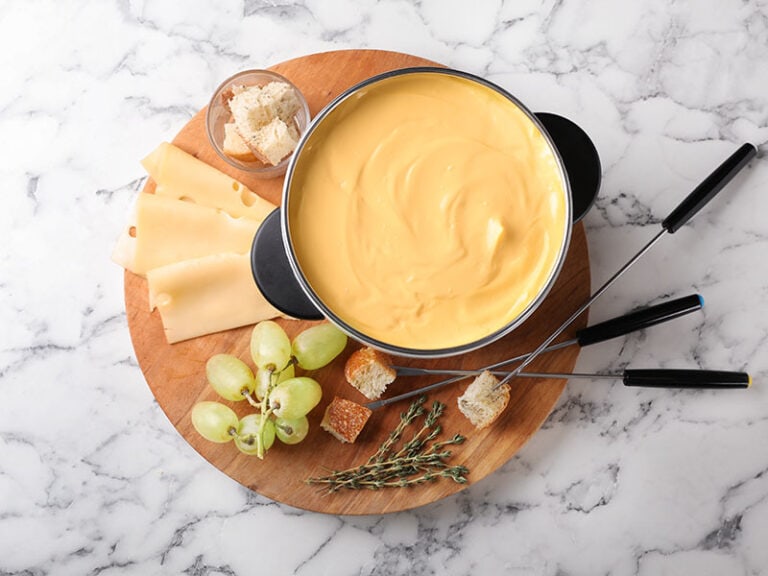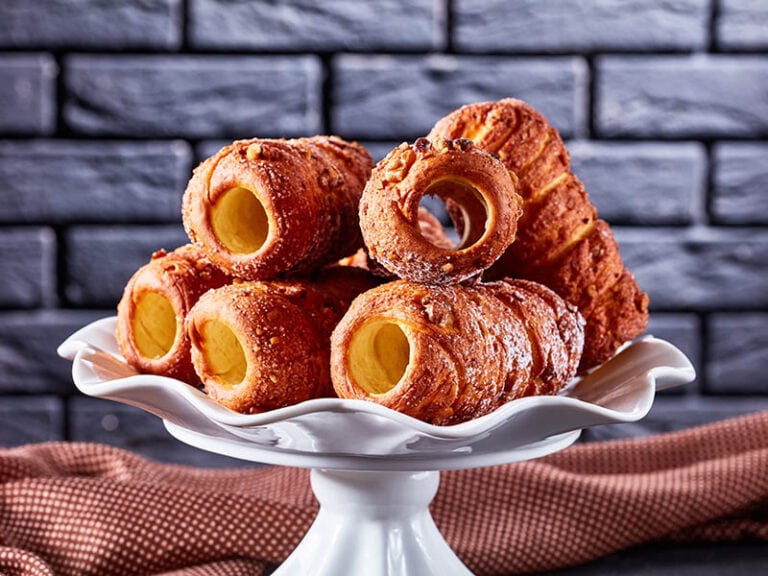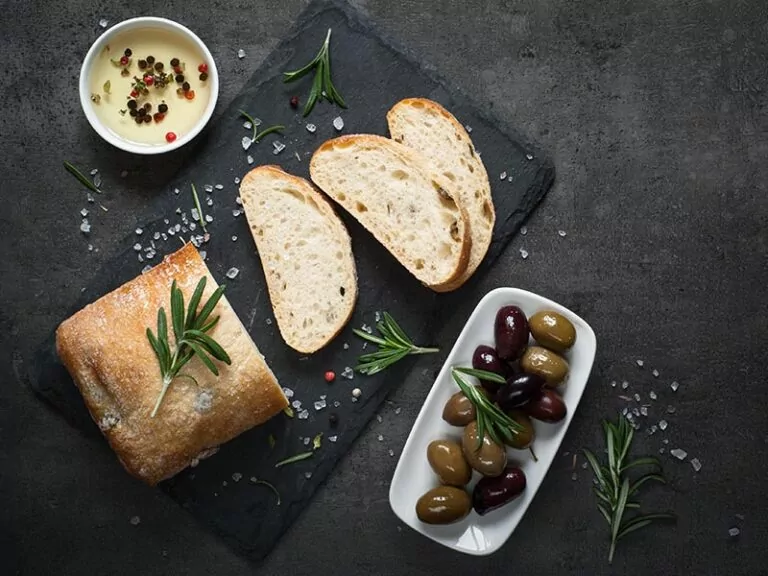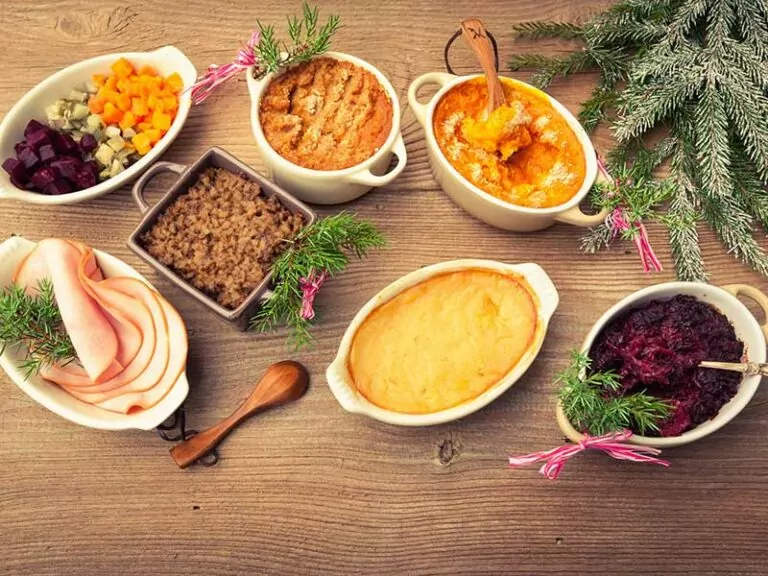European spices and herbs can transform a simple dish into something extraordinary. I’ll guide you through this diverse world of flavors, from Hungarian paprika’s warm notes to French tarragon’s subtle sweetness.
This article will demystify these essential ingredients, help you recognize their unique characteristics, and give practical tips on using them effectively in your cooking. So, keep reading to add a new dimension to your home recipes and impress your dinner guests!
Herbs
1. Basilico Genovese (Genovese Basil)

Genovese basil is an Ocimum Basilicum (sweet basil) cultivar from the provinces of Genoa, Savona, and Imperia. The best variant grows in Prà, a western section of Genoa city. This basil is prized for its clove-like aroma, often used fresh.
Genovese basil’s fame extends across Europe as the star player in Pesto alla Genovese (basil pesto) sauce. I recommend adding this basil at the final moment to protect its flavor.
This herb can elevate the sauce’s flavor profile spectacularly. Its distinctiveness and quality even earned it a Denominazione di Origine Protetta certification from the European Union.
2. Calamint
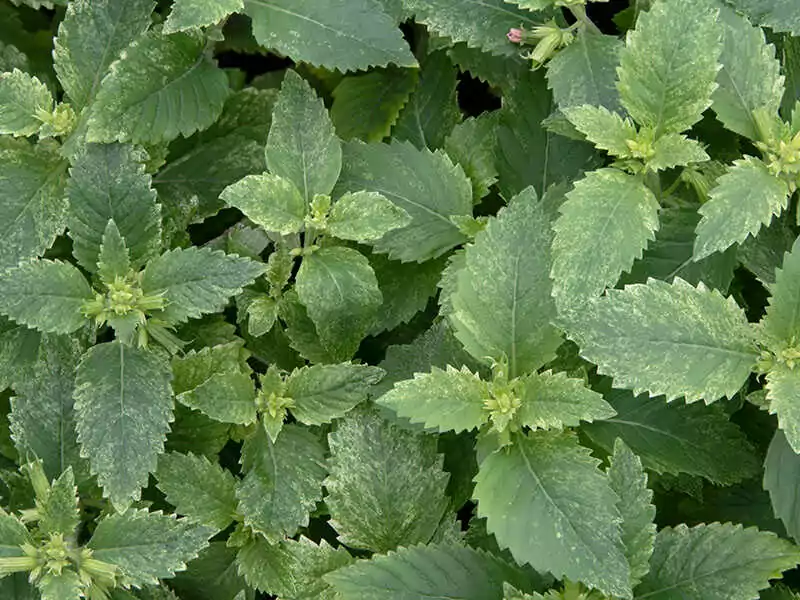
Calamint, a native plant of Italy’s Tuscany and Umbria, has found a home in other parts of the Mediterranean, Europe, and the Americas. These leaves possess a compelling fragrance, a blend of oregano and mint with a sage and savory hint.
Fresh leaves are usually used when cooked. They impart unique flavors to dishes like lamb roasts, shrimp, omelets, braised artichokes, white bean soups, wild mushrooms, and risottos.
On the other hand, dried leaves make soothing teas. Small calamint flowers, with their milder flavor, are great additions to salads or garnish. In Turkey, calamint often appears in grilled fish. This aromatic herb also mingles well with sage, fennel, lemon peel, and anise.
3. Bouquet Garni
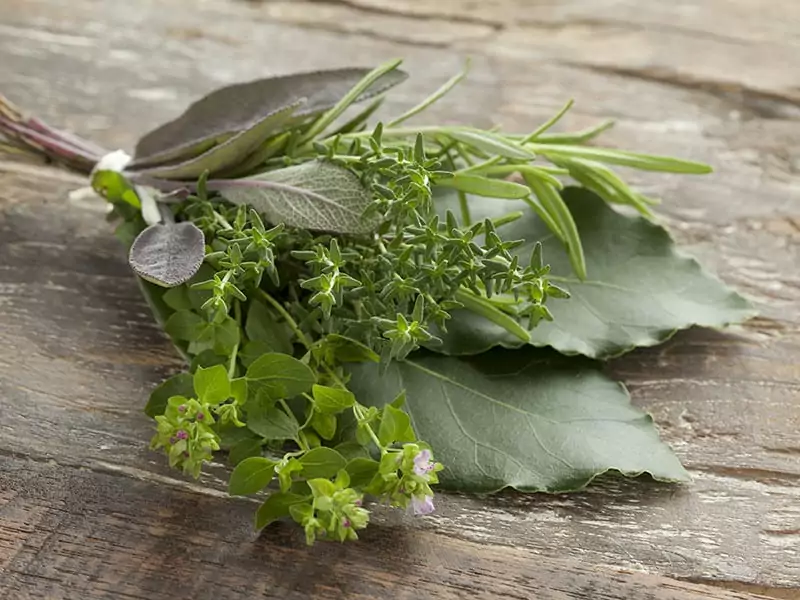
A Bouquet Garni is a bundle of herbs fastened with a butcher’s string. There’s no fixed recipe, but it commonly includes thyme, parsley, and bay leaf.
One may toss in basil, burnet, chervil, rosemary, savory, tarragon, or peppercorns for a creative twist. Bouquet Garni also uses vegetable roots, welcoming carrots, celery, celeriac, leek, parsley, and onions. There is even dried orange peel in Provence’s version!
This aromatic bouquet is an all-star in soups, stocks, casseroles, and stews. And when the flavors have already sunk in, you can easily remove the bundle, keeping your dish leaf-free. Alternative wrapping includes celery stalks, nets, or tea strainers.
4. Herbes De Provence
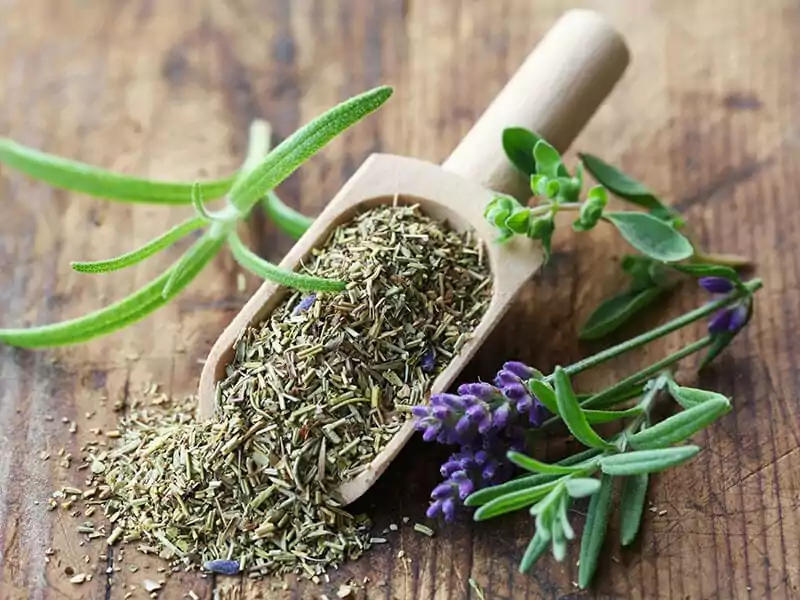
Herbes de Provence is a mix of herbs from the Provence region of southeastern France, dating back to the 1970s. It mainly contains savory, marjoram, rosemary, thyme, and oregano. Many opt to include lavender, basil, fennel, dii, bay leaf, and more.
Traditionally sold in small clay pots, Herbes de Provence is a delicious rub for meat dishes, especially grilled meat or fish. It can infuse vegetable soups or stews with a unique flavor. Feel free to add it whenever you want: before, during, or after cooking.
My way is mixing it with oil before cooking or sprinkling it onto different uncooked dishes, like vinaigrettes, fresh salads, and cheese. With various combinations utilized in Provence, this blend truly reflects the rich culinary heritage of its origin.
5. Fines Herbes
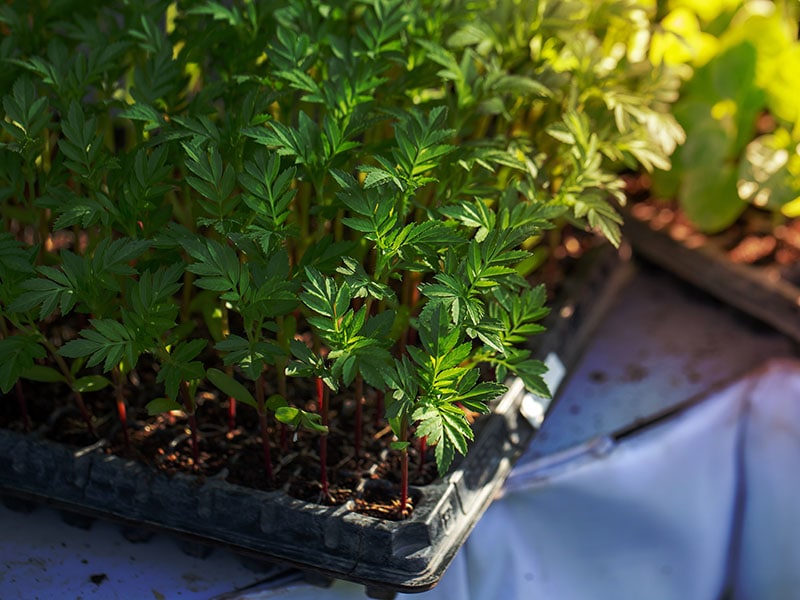
Fines Herbes, a quintessentially French herb blend, consists of parsley, chives, chervil, and tarragon as the main elements. You may also spot optional additions like thyme, savory, watercress, or marjoram.
Perfect for light, delicate dishes with short cooking times, Fines Herbes works beautifully with chicken, fish, eggs, and salads. Adding it to a Beurre Blanc sauce elevates the culinary experience to the next level.
6. Basil
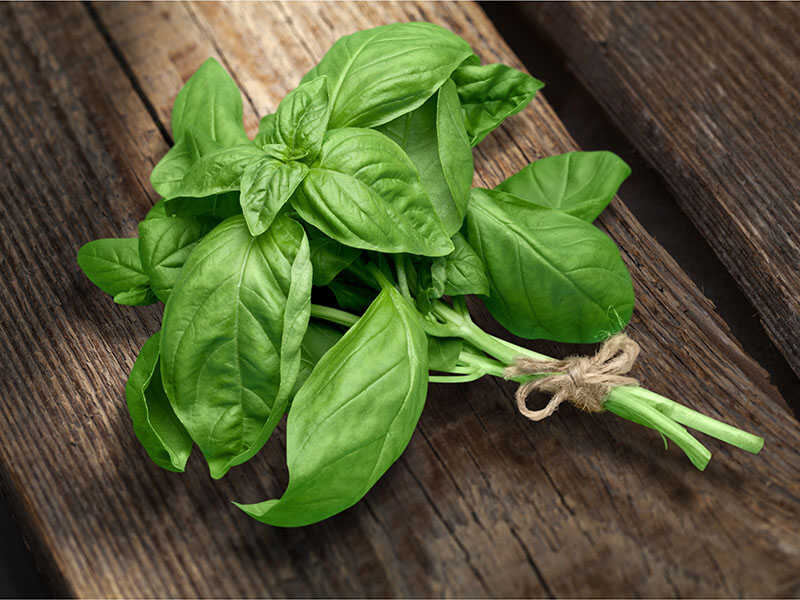
Basil is a champion in my herb garden, boasting numerous varieties, each with a unique aroma and flavor. Among all variants of basil, European types have a sweet, mild profile that I find irresistible.
While dried basil has its place, fresh leaves truly stand out. They are the key component for pesto, along with olive oil. I’ve used it to thicken soups and infuse basil flavor into ice cream or chocolate truffles. Also, only add this herb last to a dish to keep its taste vibrant.
7. Italian Parsley
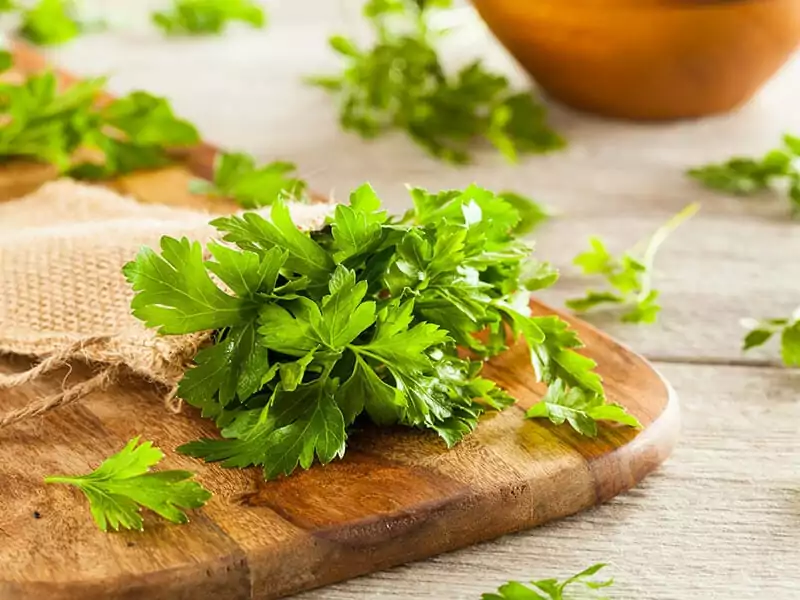
Italian parsley, also called flat-leaf parsley, has always struck me as a hidden treasure in the herb world. It offers more flavor than its curly counterpart, with a slightly peppery kick.
I love how it has become the staple flavor enhancer in Italian dishes, particularly pizza, pasta, or other sauces, without disturbing their color.
8. Curly Parsley
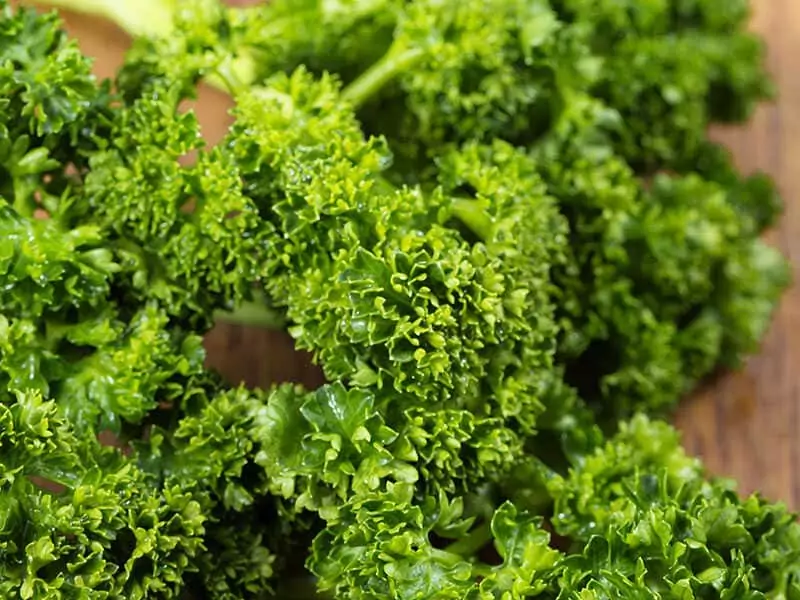
As the understated star of the culinary world, curly parsley may not boast the same robust flavor as its Italian cousin. Still, it brings more visual appeal and texture to the table.
Consider curly parsley as the ultimate garnish, brightening any dish, from a hearty soup to a fresh salad. Even better, it doesn’t interfere with the original taste; it just adds an enticing layer of texture.
9. Sage
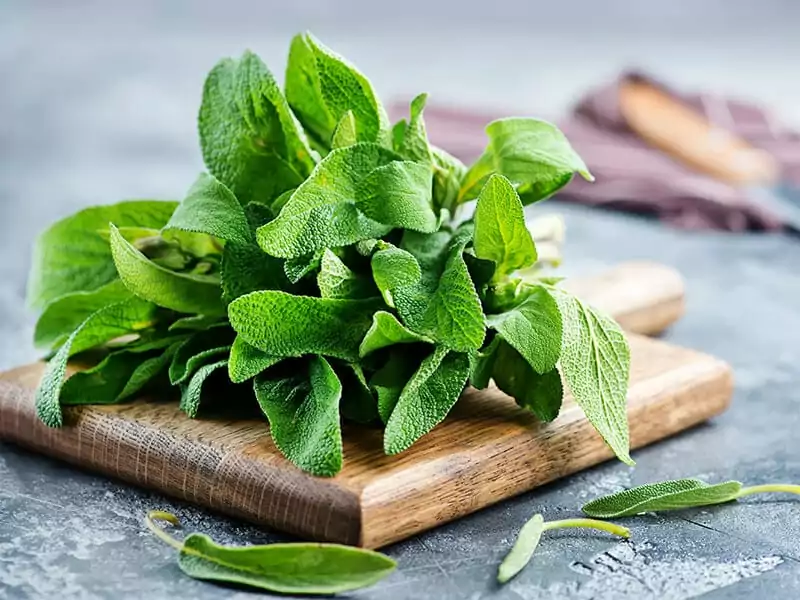
Sage is a versatile herb prominent in many established European foods, especially in Italy, the Balkans, and the Middle East. I’ve seen it in Italian Saltimbocca (veal cutlets) and various fish dishes, but it’s not too popular in French cuisine.
One of the sage’s fascinating traits is it blends beautifully with other robust herbs to flavor meat or to create aromatic poultry stuffings. When fresh isn’t on your hand, don’t worry; dried sage steps in wonderfully.
10. Oregano
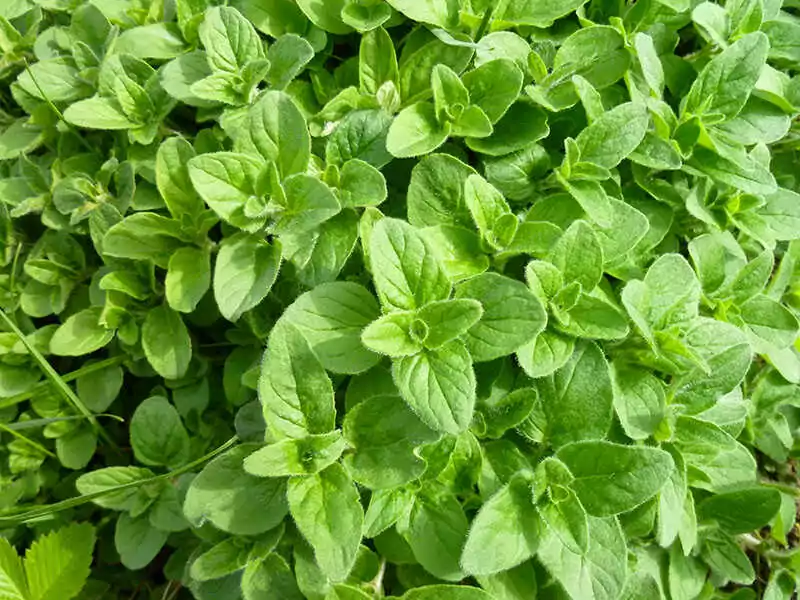
Oregano is a precious herb in Italian cuisine, wonderfully seasoning roasted, fried, or grilled vegetables, meat, and fish. In my food journey, I notice it combines with many spicy foods in Southern Italy, though Northern Italy prefers marjoram.
My Portuguese trip escapades led me to a unique practice: sprinkling dried oregano atop a tomato and cucumber salad or using it in meat and fish dishes.
In Greece, dried, ground oregano leaves are mainly in lemon-olive oil sauces to accompany meat grills, casseroles, or salads. Meanwhile, Northern Albania takes a different turn, using dried oregano to craft herbal tea.
11. Thyme
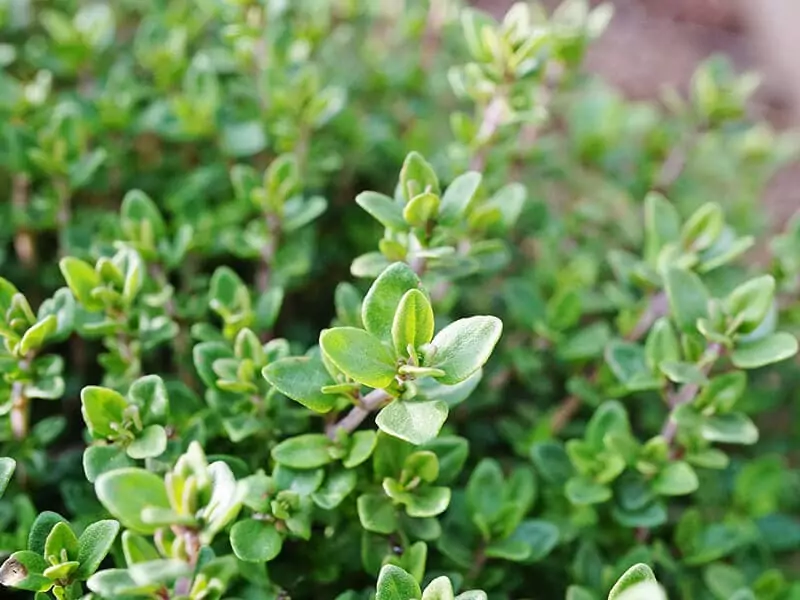
Thyme has its roots in southern Europe, stretching from Spain to Italy. It’s a well-loved herb in culinary landscapes far and wide, from Eastern Europe and North Africa to the US. In Europe, particularly Southern Europe, the intense flavor of thyme defines many dishes.
I fondly remember the fragrance of soups, sauces, stews, roasts, marinades, and dressings; all imbued with thyme’s unmistakable scent. I’ve encountered thyme in pickling olives. While fresh thyme is part of the Bouquet Garni, dried versions also appear in the Herbes de Provence.
12. Dill
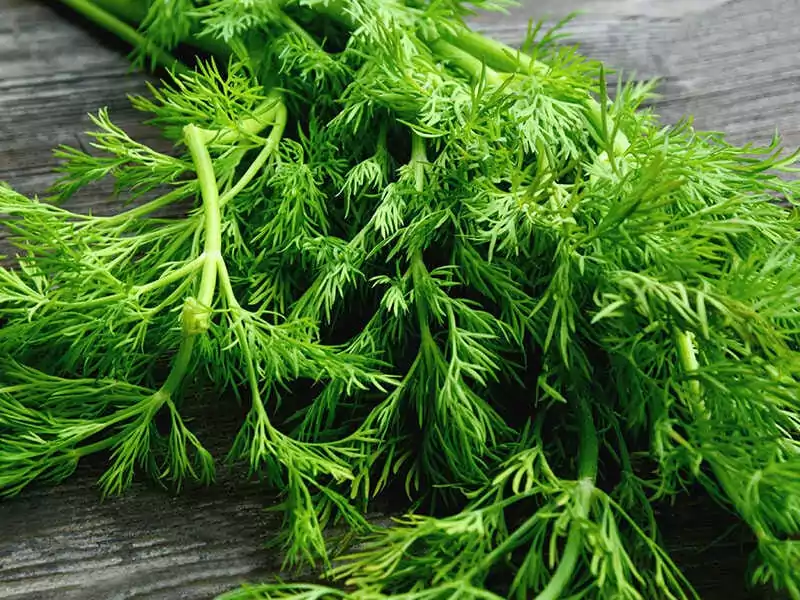
I’ve tried dill’s mild, caraway-like flavor in numerous dishes across Europe and Central Asia. Whether fresh, dried, or in seed form, its taste is best preserved by adding it at the last minute.
Besides chives and parsley, dill is a staple in the Central and Eastern European culinary scene. It’s a nice addition to borscht and other soups when finely cut. The locals also mix it with fermented milk for a refreshing summer drink. Plus, dill’s a year-round salad staple.
13. Lavender
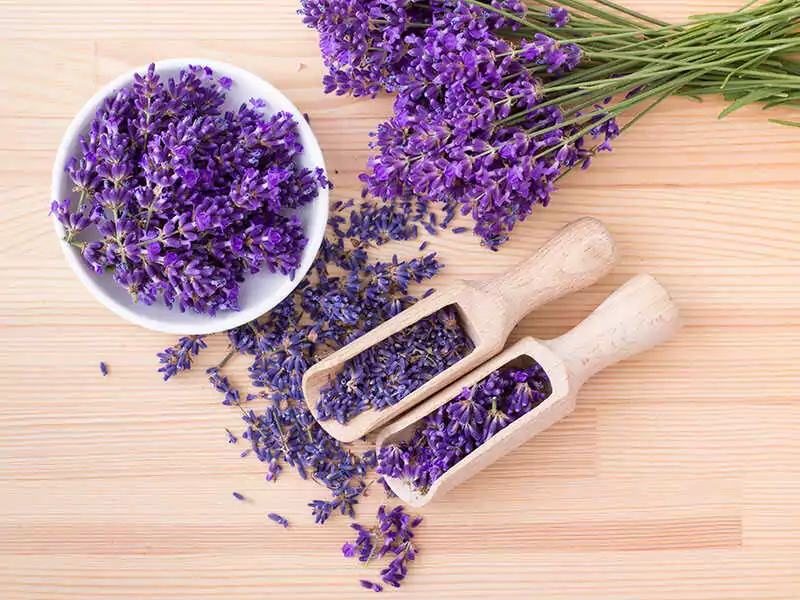
English lavender, or culinary lavender, brings a touch of Southern France to your meals. Its sweet fragrance carries a hint of lemon or citrus. Although a key component in the Herbes de Provence blends, it’s not an everyday spice outside France.
However, lavender is versatile with robust dishes, from mutton to fish. Lavender also complements different cheeses, like gorgonzola and Roquefort.
It even extends to sweets, with ice creams, jams, and jellies, while also flavoring pasta, salads, and dressings. Finally, lavender buds and leaves make a wonderful tea.
14. Juniper Berries
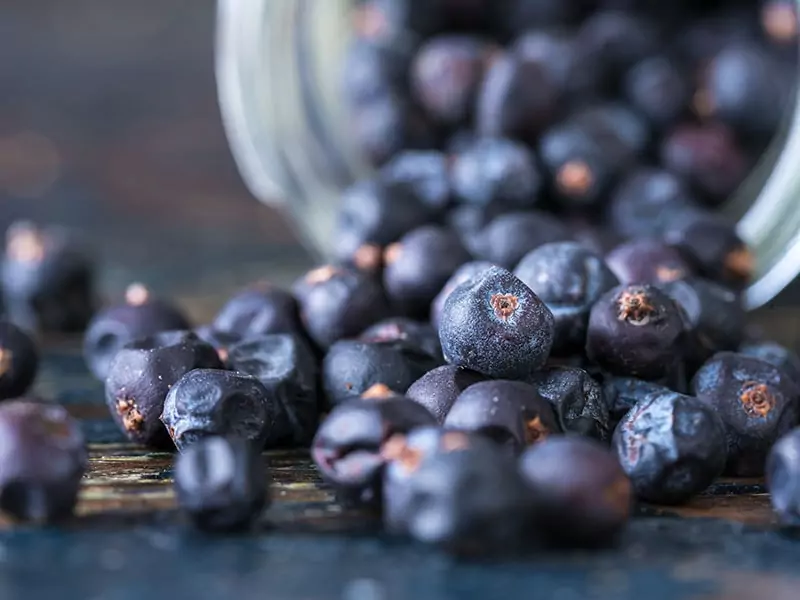
Juniper berries, with the highest quality from Southern Europe, add a unique touch to various dishes. Northern European, especially Scandinavian, cuisine leans on them for flavoring wild bird and game meat dishes.
In Northern European countries’ culinary scene, you can also find them as a flavor enhancer for pork, cabbage, and Sauerkraut. Germany, Austria, Czech, Poland, and Hungary also use them for cooking.
Juniper berries have a seat at the table in Northern Italian kitchens, specifically in South Tyrol and Apulia, for brining purposes. However, those with kidney issues and pregnant mothers should avoid these berries. (1)
15. Bear’s Garlic
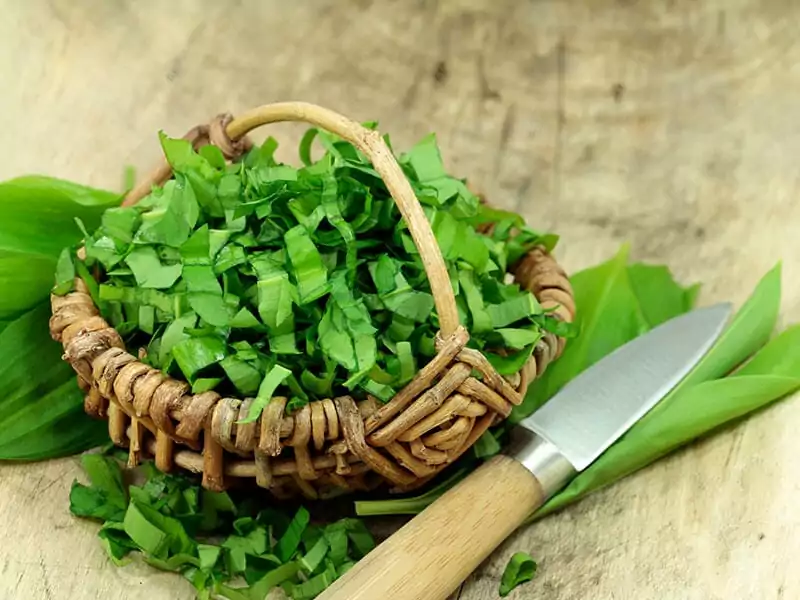
Known also as wild garlic or ramsons, bear’s garlic has claimed its culinary reputation across Central Europe. Entirely edible, its leaves lend a subtle, garlicky taste to raw salads, while its flowers make great salad garnishes.
Traditional Central European cuisines have adopted it in cheese, pesto, pasta, scones, soups, and Devonnaise sauce. Bear’s garlic is preferred raw, as heat cooking like boiling or simmering diminishes its flavors. Its bulb is a fitting substitute for garlic cloves, especially in spreads.
16. Borage
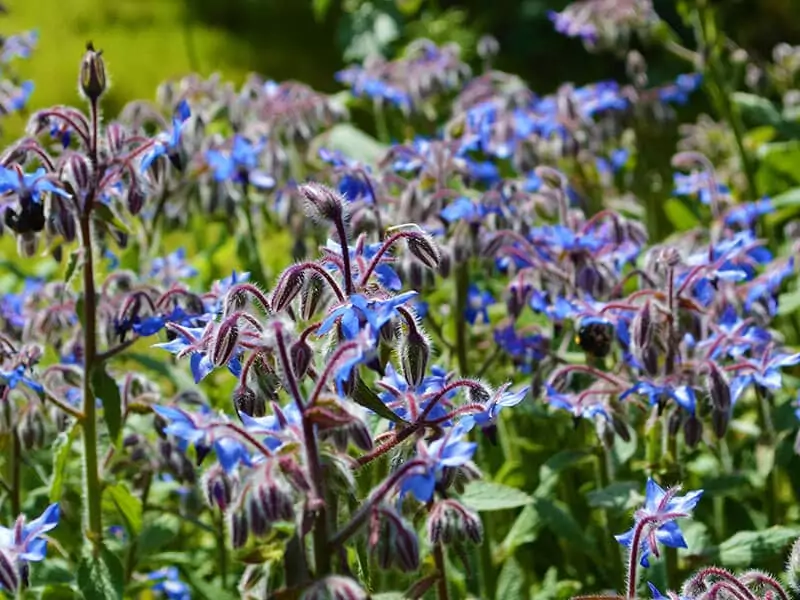
Familiar as starflower, borage appears in many European gardens from Denmark, France, Germany, and the UK to Ireland. Its edible leaves find their way into numerous soups, like the famous Frankfurter Grüne Soße (green sauce) or pickled gherkins in Poland and Russia.
In Spain and Italy, borage’s unique flavor makes the perfect stuffing for ravioli and pansotti. With such diverse uses, it’s clear why borage is cherished in many culinary traditions, even in Greece (Crete island).
17. Celery
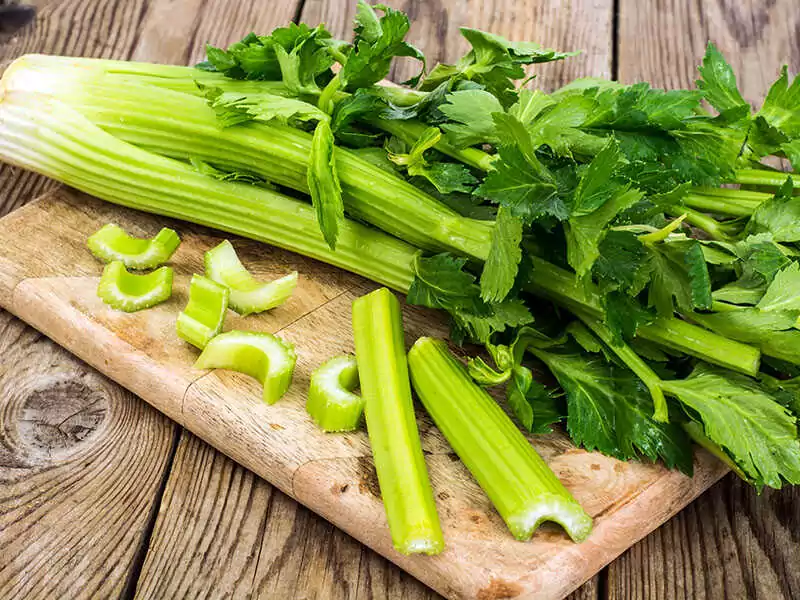
I’ve grown fond of celery root and bulb, a popular European ingredient in soup or salads. It’s also part of the French mirepoix with onions and carrots, an essential base for sauces and soups.
Take notice of the leaves, too. They make an aromatic seasoning for soups and stews. Their mild spicy flavor, yet gentler than black pepper, is a perfect dried herb. I have a soft spot for sprinkling dried celery on baked or roasted fish and meats.
18. Chives
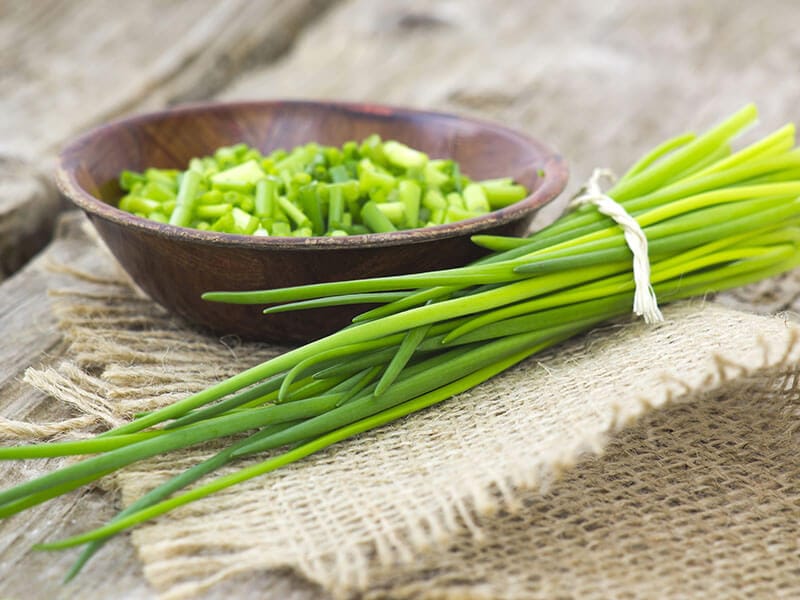
Chives are an essential herb for traditional dishes in French and Swedish kitchens. For instance, the Gräddfil sauce in Swedish midsummer celebrations won’t be complete without them.
Chives also go with quarks in Poland and Germany, a combo I truly admire. In French cuisine, they have elevated many dishes as a part of the Fines Herbes. Moreover, chive flowers are a lovely garnish that adds a beautiful touch to any plate.
19. Cicely
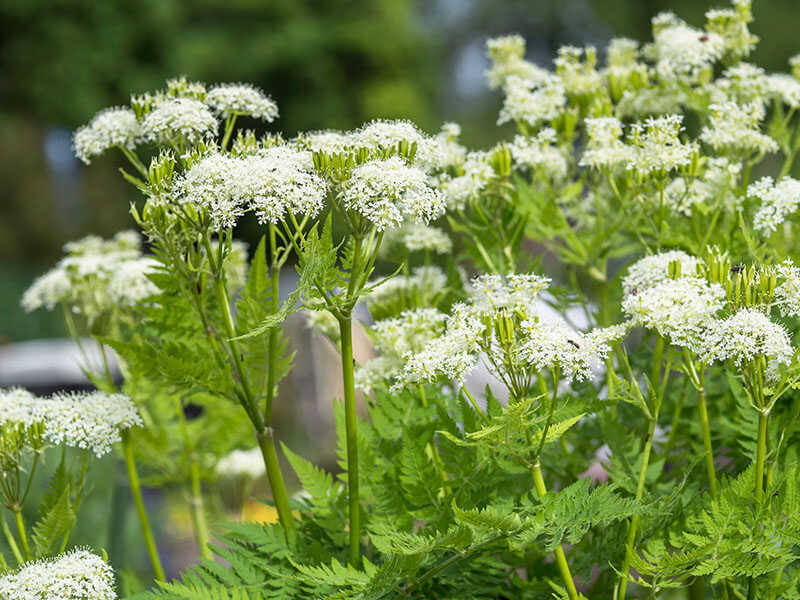
Cicely takes a leading role in culinary creativity with its strong anise-like taste. Raw or cooked, its leaves can uplift any dish. Scandinavians are fond of cicely, infusing it in akvavit (a Scandinavian distilled spirit) and stewed fruits.
If anise, fennel, or licorice re unavailable, sweet cicely fruits will be your savior, creating a similar flavor profile. It’s a versatile herb with edible roots and seeds that add depth to meals.
20. Myrica Gale
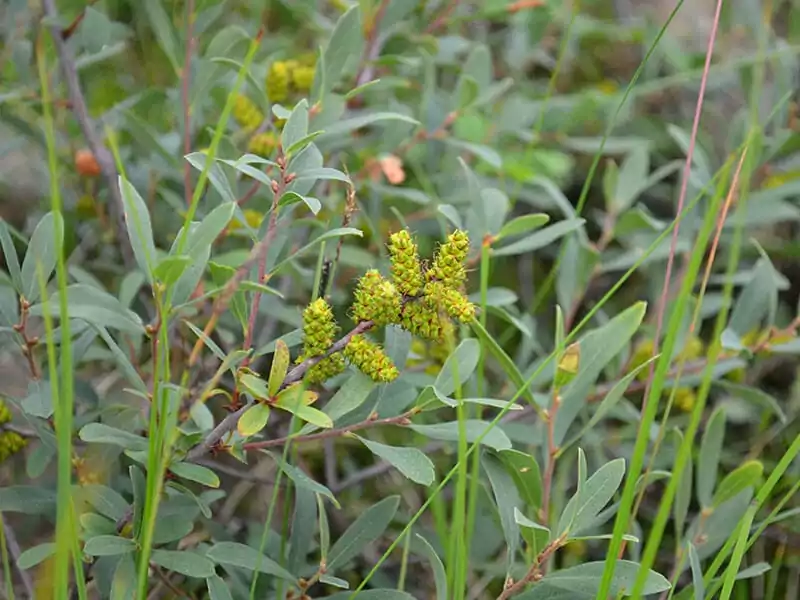
Myrica gale, known to many as sweet gale, Dutch myrtle, or bog-myrtle, hails from Russia and mainland Europe. As a versatile plant, its dried leaves are often used for teas. Combined with nutlets, they provide a distinctive seasoning.
Myrica gale was an essential ingredient in gruit, a beer flavoring in Germany, Belgium, and the Netherlands, until the 16th century. This plant adds a unique taste to home-flavored schnapps in Denmark and Sweden.
21. Southernwood
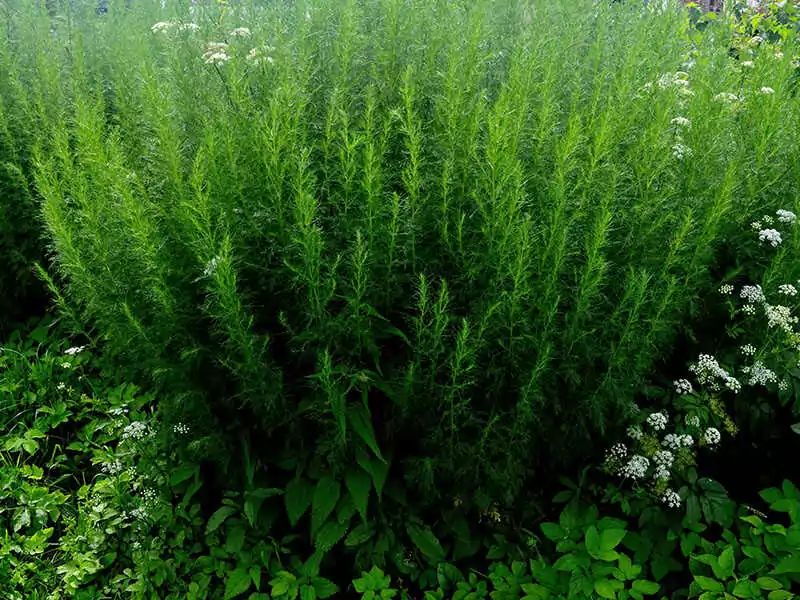
With its strong camphor-like odor, Southernwood has an intriguing past as an air freshener or strewing herb. Thanks to its unique flavor, the Italian love it as a culinary herb.
Its young shoots can enhance the flavor of pastries and puddings. And its leaves and flowers also create a calming herbal tea.
22. Watercress
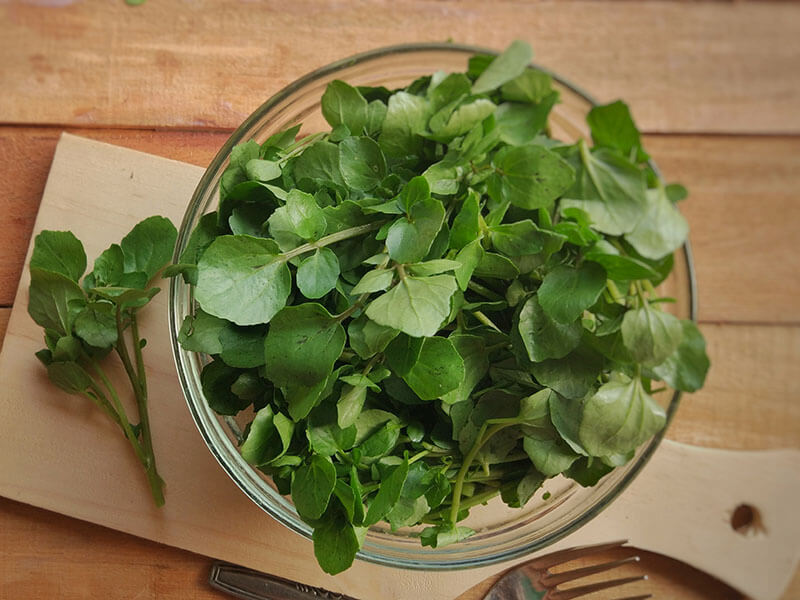
Watercress is a swiftly growing perennial from Europe and Asia. It has a long history as one of the earliest leaf vegetables on humans’ plates. Every part of this plant, from leaves to stems to fruit, can be enjoyed raw.
In Ancient Roman times, watercress was believed to have the power to heal mental illnesses. Even the renowned twelfth-century mystic, Hildegard of Bingen, savored it steamed, trusting in its potential to alleviate jaundice or fever.
23. Bay Leaf
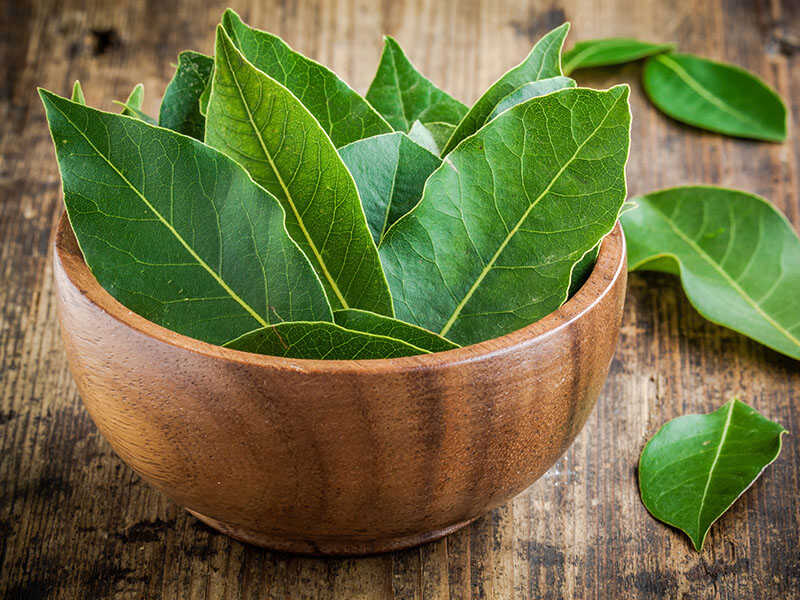
Bay leaves are one of my go-to herbs in both whole and ground form. I’ve always loved how they add a robust flavor to many of my favorite European dishes. However, their potent flavor requires removal before serving.
Bay leaves’ usage is endless, from meat dishes and brines to soups, stews, seafood, and vegetables. Apart from classic French and Italian dishes, this herb also appeared in many ancient Greek recipes.
24. Marjoram
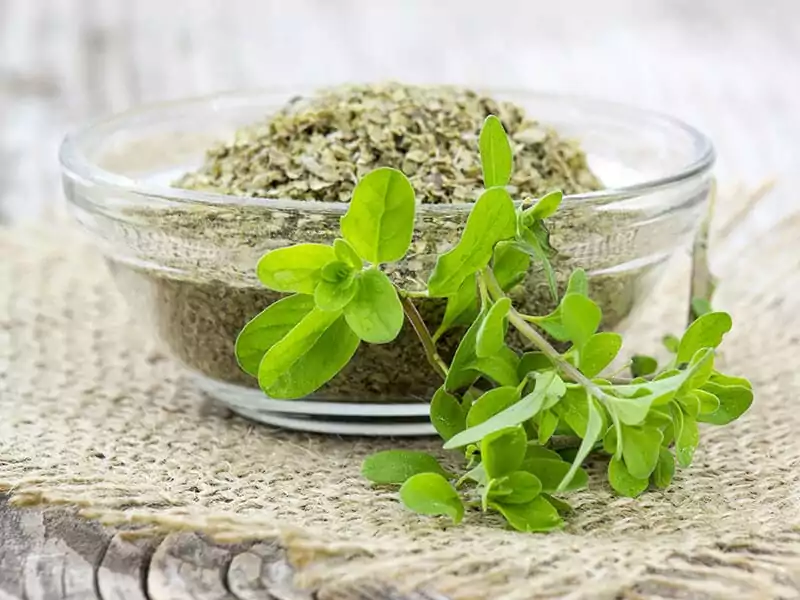
With its Cypriot roots, marjoram has found its place in Asia, Europe, America, and Africa. As a milder, sweeter cousin of oregano, it beautifully seasons meats and fish, especially when added towards the end of cooking.
Every time I sprinkle marjoram onto salads, sauces, soups, stews, and roasts, it brings back different memorable Greek meals I’ve tried. Besides food, marjoram is also handy in many Austrian remedies!
25. Rosemary
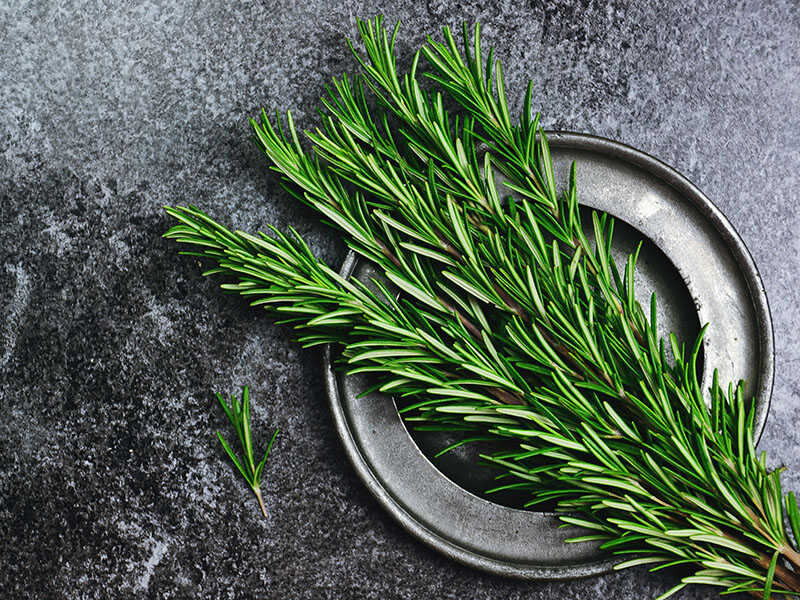
Rosemary, a traditional European herb, grows plentifully in Italy since its bitter, astringent, peppery, and woody flavor is irresistible. It transforms bread, sauces, soups, stews, stuffing, and vegetables.
Moreover, roast meat like chicken, turkey, pork, or lamb feels incomplete without it. I’ve seen Italian people using rosemary to enliven meats and tomato sauces. Some even make its stems into kabob skewers. And don’t forget the calming rosemary tea, a perfect way to end your day.
26. Savory
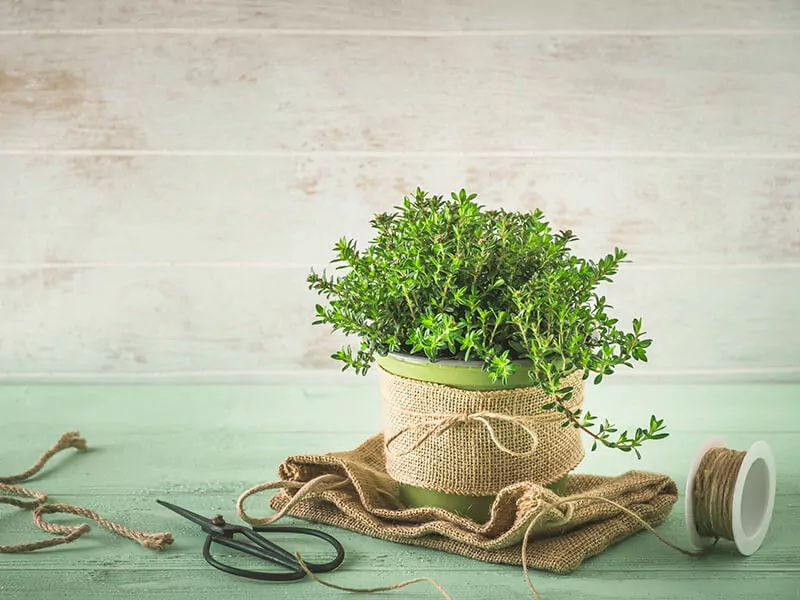
In Southern Europe’s warm temperate regions, winter savory takes center stage with its robust flavor. Its knack for complementing beans and meats like chicken and turkey makes it a staple in stuffing, soups, and sauces. It also shines when sprinkled over breadcrumbs as a coating.
Meanwhile, its sweeter and more delicate cousin, summer savory, stars in Herbes de Provence and is beloved in grilled meats, barbecues, stews, and sauces. It’s the preferred variant for sausages. In Bulgarian cuisine, it’s an essential condiment alongside salt and sweet red pepper.
27. Angelica
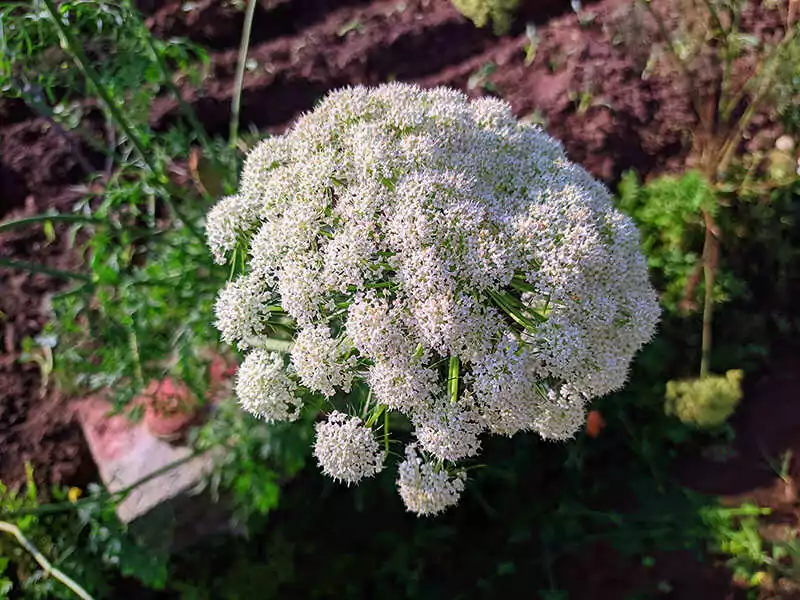
Here is a gift from Northern Europe: Angelica, a versatile plant. As a vegetable, its leafstalks are similar to celery, while its seeds bring a touch of sweetness to cookies. Crunchy stems can be candied and used for decorating baked goods.
Along with the leaves, angelica stems lend a celery-like flavor to liqueurs, sauces, salads, and vegetable sides. As for flowers, they are a lovely touch to fruit salads and cream cheese.
Moreover, angelica roots and seeds work wonders in flavoring gin and liqueurs. It also brings a flavorful punch to rhubarb, orange marmalade, sorbets, and fruit syrups.
28. Chervil
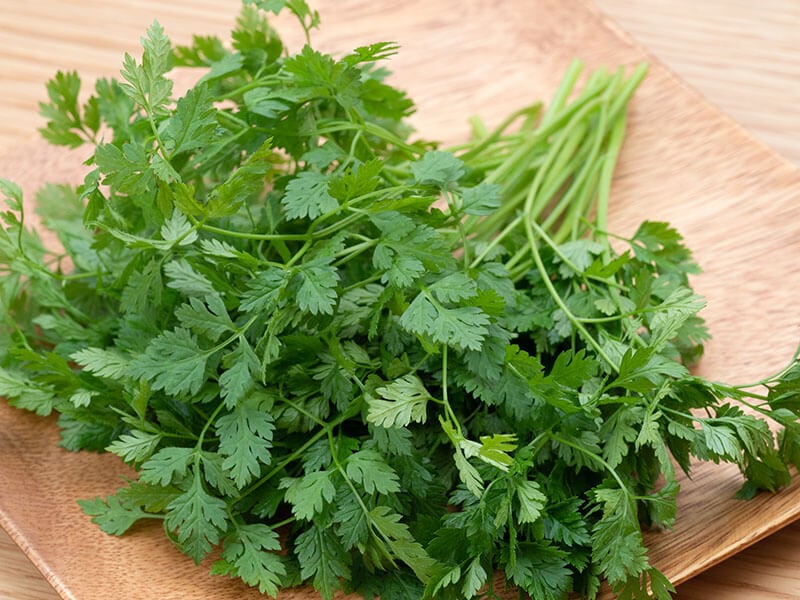
Chervil, known as French or garden parsley, blooms more in Europe than in America. It’s more delicate than its cousin parsley, with a hint of licorice or aniseed. Its delicate flavor is preserved best when added at the last minute.
In France, chervil is a star in seasoning salads, poultry, seafood, omelets, spring vegetables, soups, and sauces. Its role continues; it’s part of the Fines Herbes with tarragon, chives, and parsley.
29. Hyssop
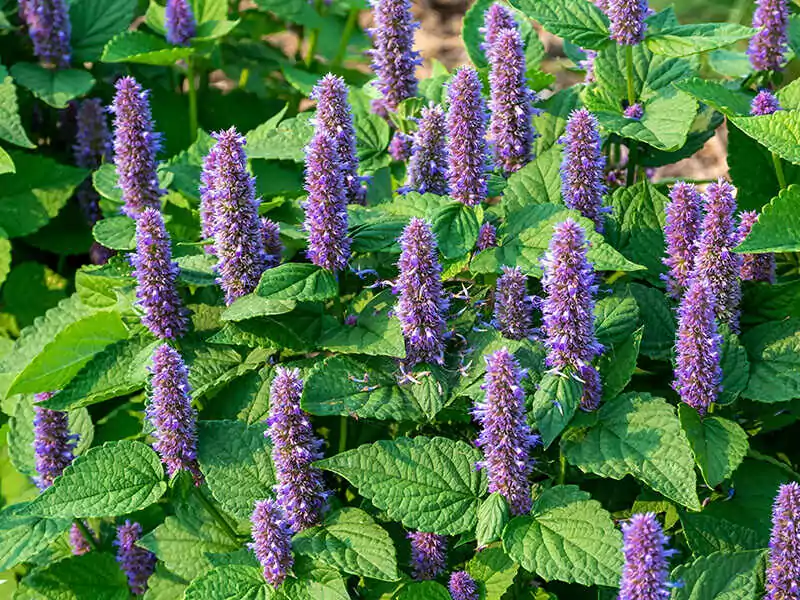
Hyssop is a native herb of Southern Europe. Its intense minty aroma and mild, slightly bitter flavor can be a bit overwhelming. So remember, only use this herb moderately in cooking.
As a garnish, hyssop provides an aromatic touch to salads and soups while adding depth to liqueurs. You’ll find it as a cornerstone in many absinthe recipes like Chartreuse.
30. Lovage
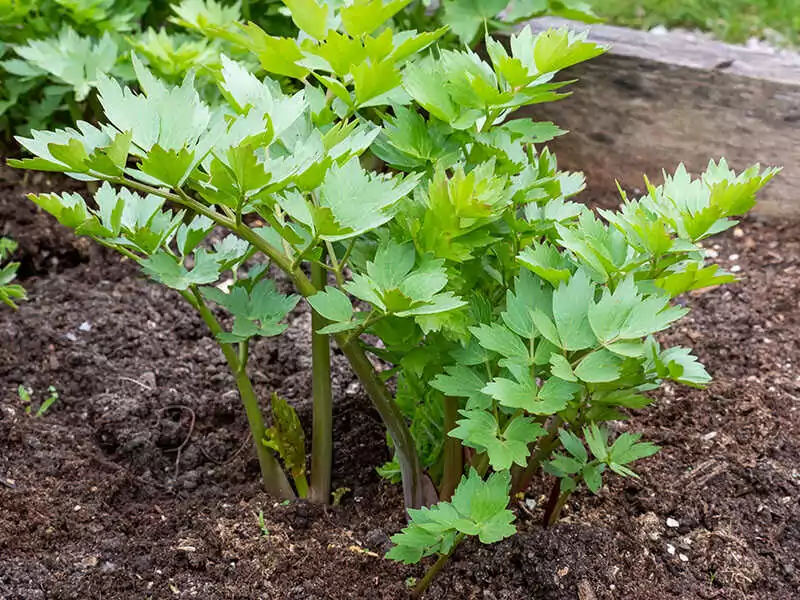
Lovage tastes similar to celery and parsley but is stronger and spicier. This European native is a staple in classic Southern European cuisine, but I recommend only cooking it briefly, as its flavor fades with prolonged heat.
From the Netherlands to Ukraine, lovage leaves are part of salads, soups, and broths. Its roots are also treated as a vegetable in salads, while its seeds bring a unique kick as a spice. It’s particularly delicious with white asparagus and salt, as the Netherlands does.
31. Tarragon
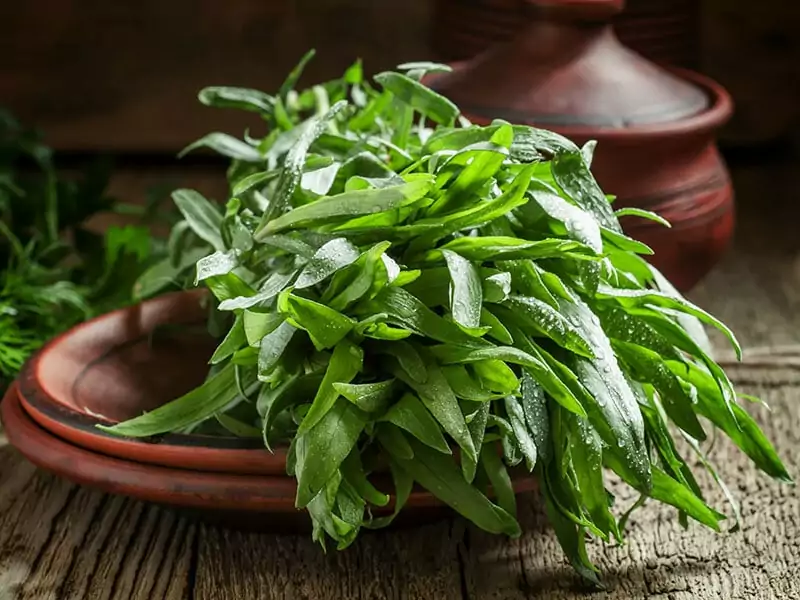
In my culinary adventures, tarragon and I have become quite the pair. Preferred in France, tarragon boasts many variations like French, Russian, and wild tarragon. Now, for cooking, French tarragon is my go-to, packing a punch that doesn’t appear in Russian ones.
This herb is super versatile, from flavoring eggs, fish, and chicken to being a component in Béarnaise sauce and Fines Herbes. One of my favorite ways is to mix it with butter as a topping for grilled salmon. And let’s not forget a tangy delight called tarragon vinegar.
Spices
32. Paprika
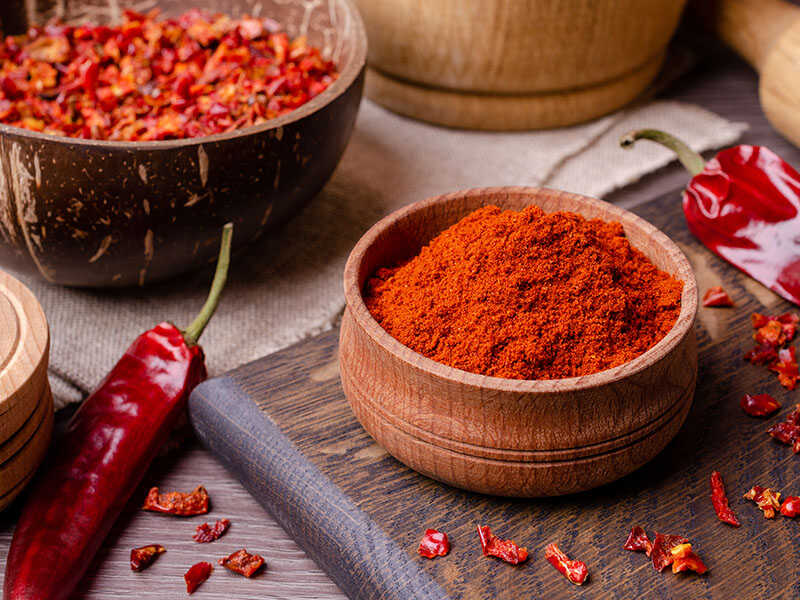
Paprika is a spice derived from dried, ground red peppers. It adds vibrant hues and flavors to rice, stews, and soups. There are many paprika variants, especially in Spain and Hungarian.
The latter holds a proud position as a significant source, with different grades. Among them, the popular variety is the Szegedi paprika (Szegedi Fűszerpaprika-Őrlemény), with its robust, spicy aroma and a blend of sweet, mellow, and spicy flavors.
Then, Spanish smoked paprika comes in 3 versions: the mild pimentón dulce, mildly spicy pimentón agridulce, and the heat-packing pimentón picante. A special variant is pimentón de la Vera, an exclusive product from La Vera Valley, Cáceres, with a unique smoky flavor and aroma from oak wood drying.
In Spain, paprika is a vital ingredient in chorizo, while in Hungary, it takes center stage in national dishes like Goulash and Paprikash (paprika gravy). As for Portuguese cuisine, countless dishes won’t be the same without it.
33. Sharena Sol (Bulgarian Spice Mix)
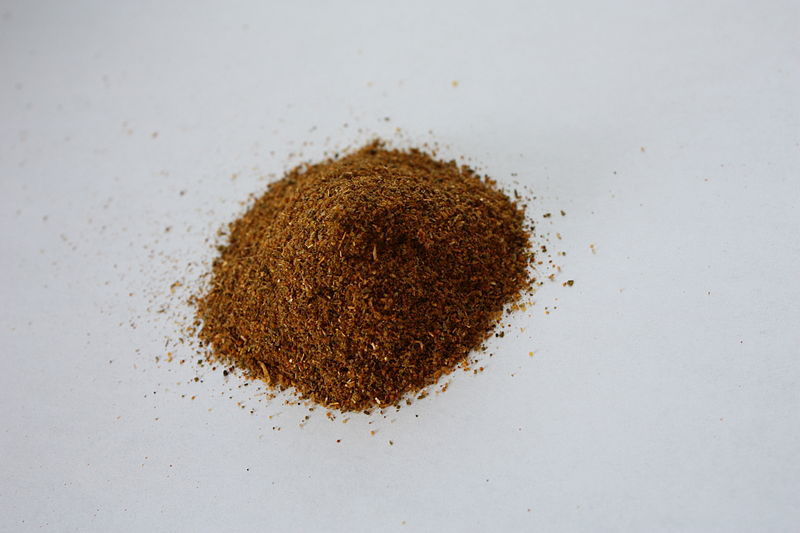
Sharena Sol, translated as colorful salt, is a quintessential part of Bulgarian cuisine. This vibrant blend infuses salt, paprika, and dried summer savory. Other optional ingredients like dried fenugreek leaves, thyme, basil, or cumin can also appear.
Shanera Soi’s mild, aromatic flavor is a go-to sprinkling for bread, potatoes, fries, vegetables, and cheese. Truly, it paints every meal with a dash of Bulgarian tradition.
34. Saffron
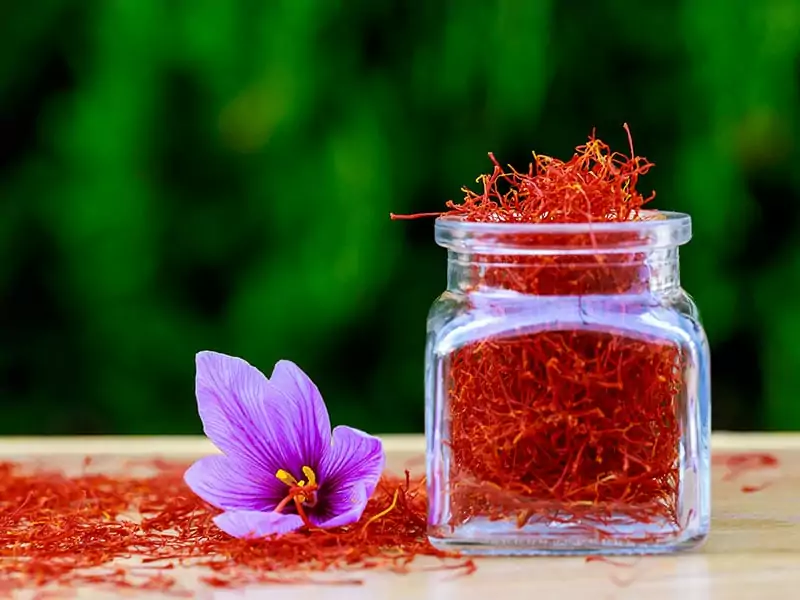
Saffron is famous for its honey-like aroma and complex wood, hay, and earth notes. I’ve seen it transforming countless dishes. It has an honored place in my kitchen cabinet, ready to bring depth to cheeses, confectioneries, liquors, baked goods, curries, meat dishes, and soups.
In Spain, saffron is indispensable in Zarzuela (seafood stew) and Paella Valenciana. And the punch it adds to French Bouillabaisse and Italian Risotto alla Milanese (saffron Risotto) is unforgettable.
35. Spanish Mancha Saffron
Mancha saffron wears a couple of hats, referring to a general grade of saffron and a high-quality type grown exclusively in the fields of Spain’s Castilla-La Mancha region.
The latter version isn’t just any saffron; it has earned the prestigious PDO-protected status. The charm of this saffron lies in its floral and slightly bitter taste, making it a culinary gem.
36. Fennel Seeds
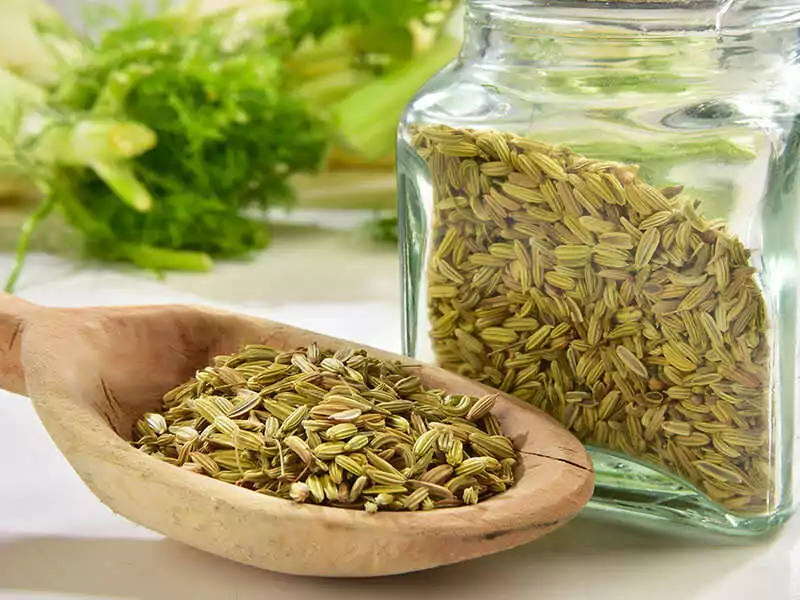
Fennel seeds carry a faint sweetness, with a flavor profile akin to licorice but less strong than cumin or anise, despite occasional mix-ups with the latter. Notably, they’re preferred for sprinkling over fish and seafood rather than meat or poultry.
These seeds are a baking must-have in any candinavia and central European bakery, especially rye bread and sweet pastries. Italian cuisine also has a special place for them in sausages.
37. Mustard Seeds
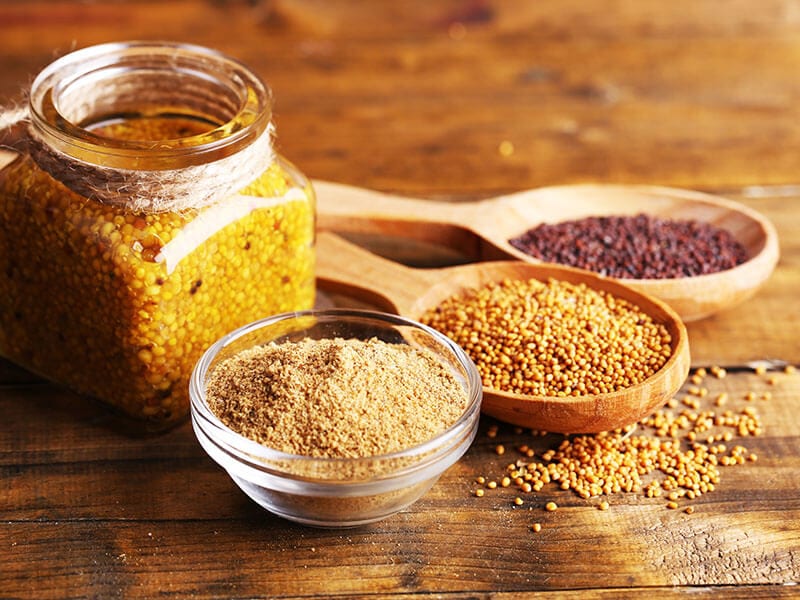
Thanks to their intense flavor and a touch of bitterness, mustard seeds have been a staple in European cuisines for a long time. Here is a personal tip for a better culinary experience: toasting them in oil mellows their bitterness while waking up those bold flavors.
From the secret ingredient behind Dijon and English mustards to the essence of typical table mustard in Russia, these seeds, especially the brown variants, truly leave their mark.
38. Vadouvan (French Spice Blend)
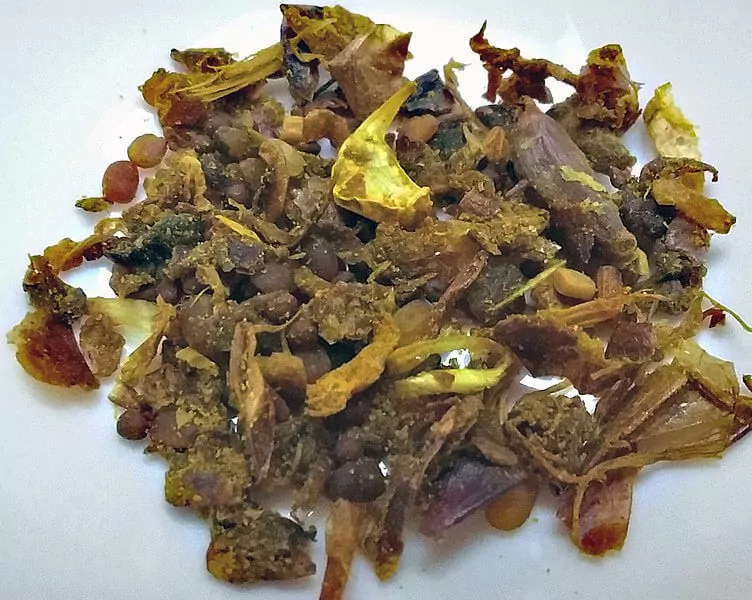
Vadouvan, also known as Vaudouvan, is a French spice twist on traditional Indian masala. This fusion of flavors includes aromatic elements like curry leaves, fenugreek, garlic, onion, shallots, black mustard, black pepper, cardamom, cumin, and turmeric, all dried and coarsely pounded.
Vadouvan does a stellar job, whether enhancing poultry, seafood, veggie dishes, or salads. For an extra kick, it’s sometimes mixed with oil and water to create a bold, flavorful paste.
39. Garlic
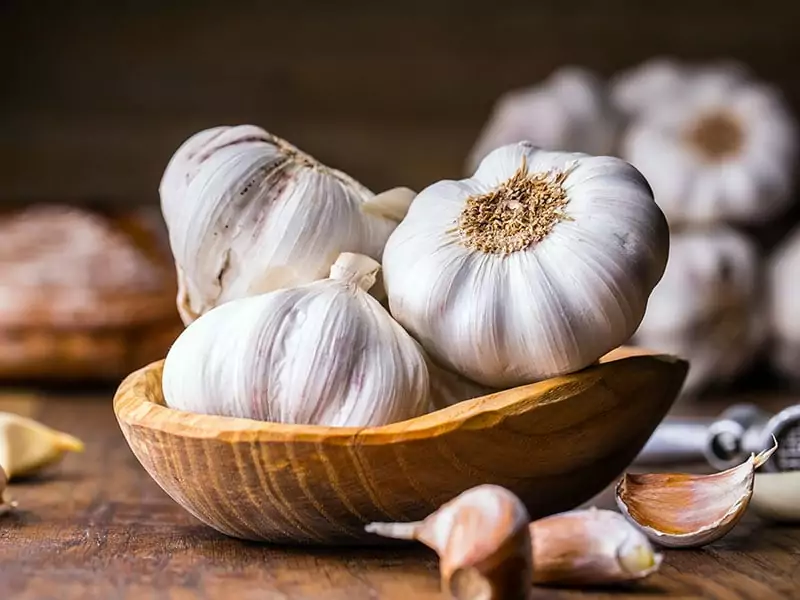
Known for its potent flavor, garlic is a cornerstone in Southern and Eastern European cuisines as a seasoning and a condiment. I love the unique taste of smoked garlic, a specialty in British and other European cuisines.
Whether stuffed in poultry and game meats, simmered in soups and stews, or pickled as an Eastern European appetizer, it never disappoints.
40. Onion
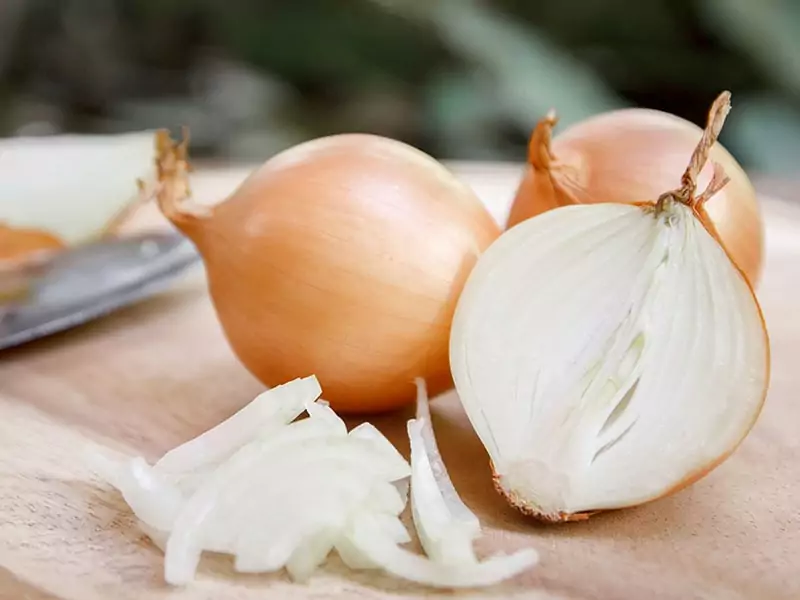
Onions can be prepared in many ways: baked, fried, grilled, or even eaten raw in salads. Who can forget their vital role in dishes like French onion soup, creamed onions, and onion chutney?
I’m always keen on stuffing onions, like the Turkish Sogan Dolma (stuffed onions). I’ve also nibbled on onions pickled in vinegar, a traditional snack accompanying fish and chips in the UK and the Commonwealth.
41. Blue Fenugreek (Trigonella Caerulea)
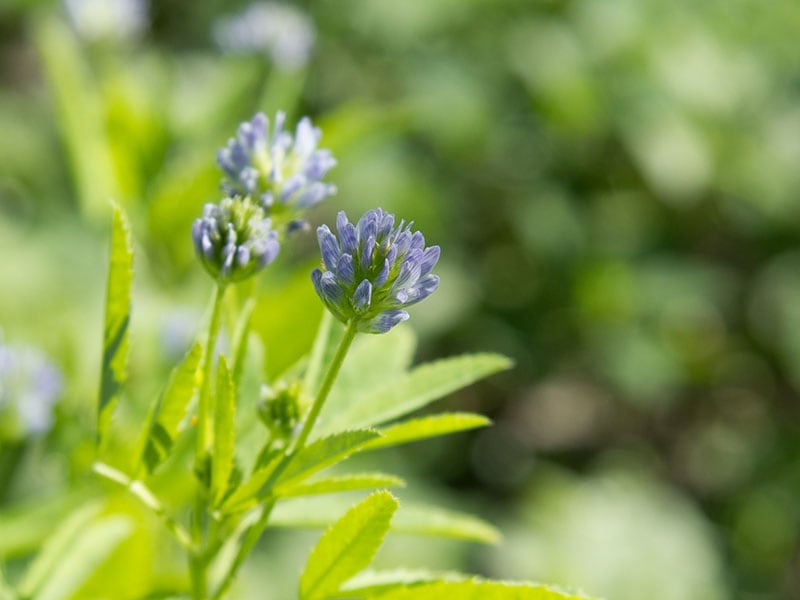
Blue fenugreek, or Utskho Suneli, is a beloved feature of Georgian cuisine, starring in their iconic spice mix, Khmeli Suneli. With a taste and aroma akin to regular fenugreek yet subtler, this spice isn’t shy about versatility.
The leaves, seeds, and pods all find their place in culinary creations. Even Swiss cheese isn’t immune to its charm, as it’s sprinkled into Sschabziger cheese for extra flavor.
42. Caraway
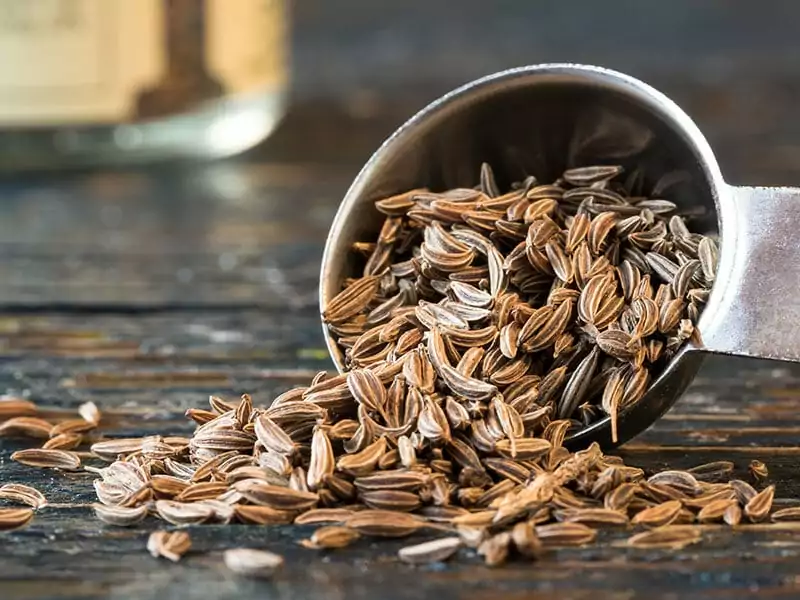
Caraway, a humble spice from Europe, Western Asia, and North Africa, showcases its versatility in different cuisines.
I’ve tasted its warm, sweet, and slightly sharp taste in a British caraway seed cake. Be it beef seasoning in Austria, pork seasoning in German dishes, or flavoring in Hungarian Goulash, caraway is every gourmet’s dream.
Caraway adds a unique touch to Norwegian and Swedish black bread and Latvian Jāņi sour milk cheese. Moreover, cheeses like Havarti and Bondost are also infused with caraway.
43. Horseradish
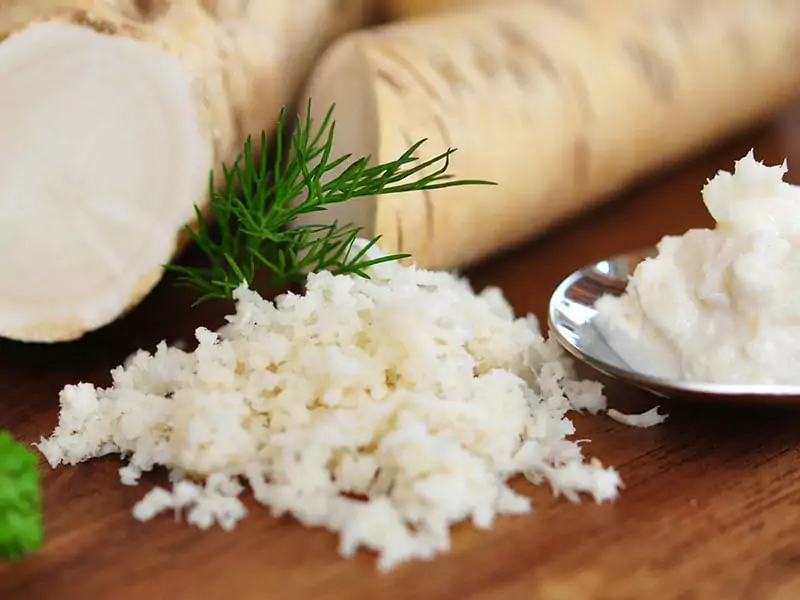
Horseradish is a root vegetable with origins in southeastern Europe and western Asia. It has earned its stripes as a spice and a condiment. It appears in the Passover Seder plate as Maror, a bitter herb staple in Ashkenazi Jewish traditions.
The horseradish sauce, made by mingling grated horseradish root with vinegar, is a beloved condiment in the UK, Denmark, and Poland. It can go with the roast beef in a hearty Sunday roast.
Some even mix horseradish with a splash of lemon juice or citric acid to make Tafel Meerrettich in Germany. Plus, it pairs with mustard in the British Tewkesbury mustard.
44. Cinnamon
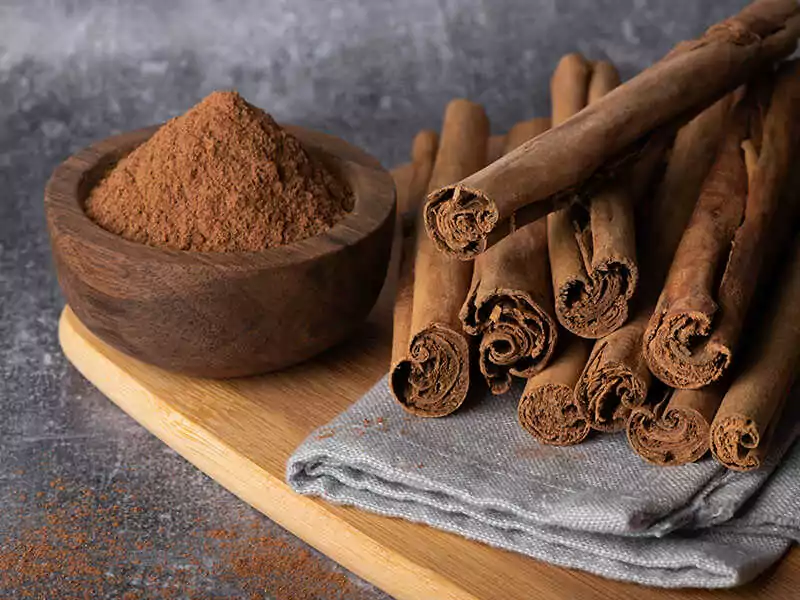
Cinnamon comes as whole sticks or finely ground. Its sweet, aromatic scent is a standout in Portuguese and Turkish dishes, as it’s suitable for both sweet and savory recipes.
Think of it as the secret ingredient in pickling or Christmas drinks, like the cozy eggnog. And I can’t skip the cinnamon sugar, a blend of cinnamon and sugar. It’s a must-have for toast, cereals, and fruits in the US and Europe.
45. Cloves
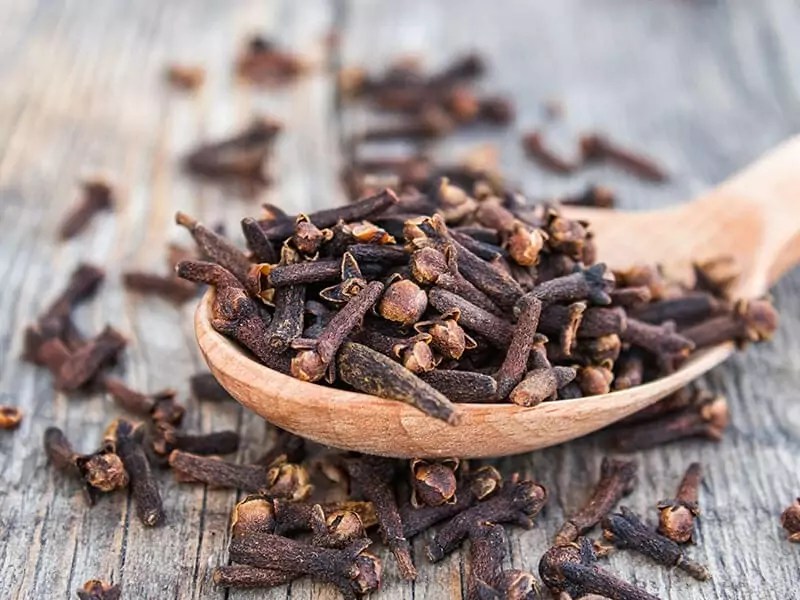
Cloves, both whole and ground, are like little aroma bombs with their intense, warm, sweet scent. They may be deemed too strong by some in Europe, but they find their way into boiled white rice in many European countries.
Cloves are even an integral part of Greek stews, alongside cinnamon. While they’re a favorite in Sicilian cuisine, they’re primarily used for meat stews in France, like duck cassoulet. And in Germany, cloves are seasoning for meat and cookies!
46. Nutmeg
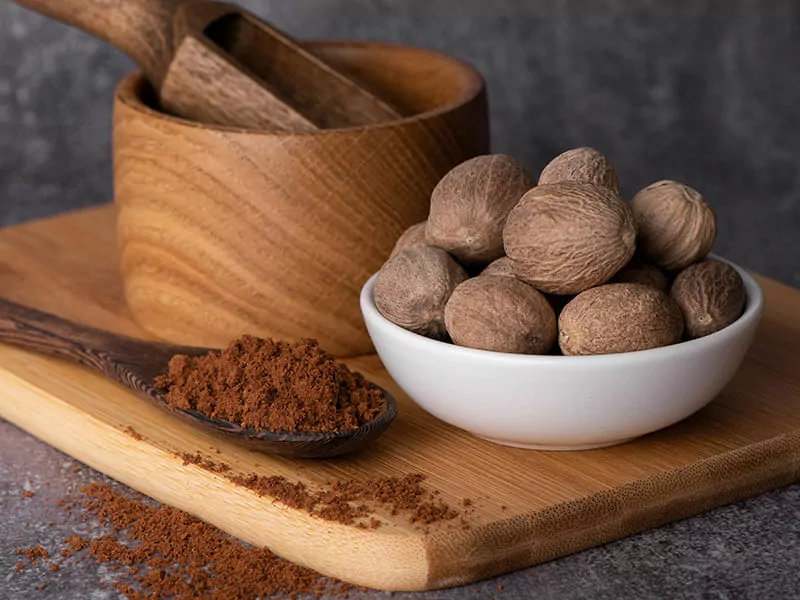
Nutmeg adds a special touch to potato and spinach dishes, soups, sauces, and processed meat. Have you tried using nutmeg in rice pudding or adding it to veggies, such as Brussels sprouts, cauliflowers, and string beans, as Dutch cuisine does?
Nutmeg even appears in drinks like mulled cider, eggnog, and traditional Scottish haggis. And the Italians use it as a stuffing for meatloaf or dumplings. Besides, who can forget its role in a classic pumpkin pie?
47. Mahleb
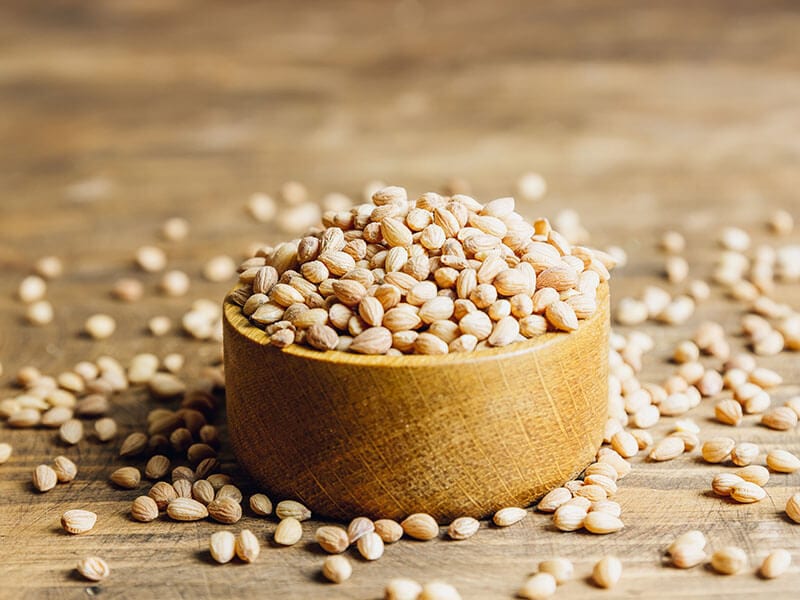
Mahleb, a ground spice, is an extraordinary addition to various foods, from bread, cookies, and cakes to meat stews and pilafs. It leaves a sweet, subtly bitter taste with almond and cherry hints.
Its cultural touch is also visible in different types of Greek holiday tsoureki bread, such as the Christmas bread, the braided Easter Cheoreg, or the New Year’s Vasilopita. Mahleb also helps enhance Turkish Poğaça scones and other pastries.
Beyond its unique flavor, Mahleb carries medicinal properties, believed to aid digestive issues, respiratory problems, and inflammations. (2)
48. Ginger
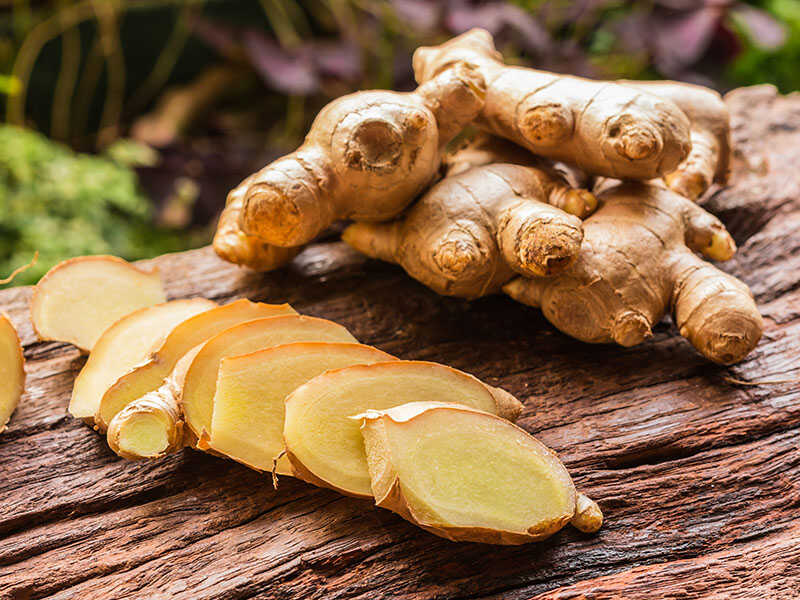
Ginger is a fascinating spice, offering an intense, sweet aroma with a fiery flavor. In my kitchen, there are many sweet dishes using ginger like gingerbread, ginger snaps, ginger beer, ginger ale, and even parkin or speculaas.
A trip to Jarnac, France, has introduced me to a ginger-flavored liqueur called Canton. In the UK, there is ginger wine in its iconic green bottle. This country also has a candied/crystallized ginger product: stem ginger.
Even in my morning cup of coffee or tea, a dash of ginger helps elevate their flavors. And here’s a tip: Substitute fresh ginger for ground at a 6:1 ratio.
49. Cardamom
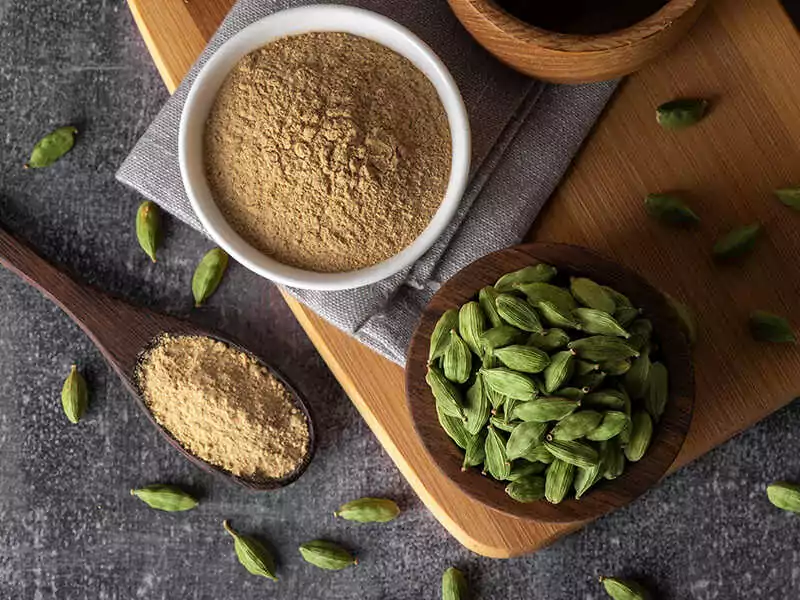
I often use cardamom, either whole pods or ground, in pickles, coffee cakes, and cookies. Baked dishes in Nordic countries, such as Sweden, Norway, and Finland, feel incomplete without it.
I still remember the aromatic allure of Julekake, a Scandinavian Yule bread, the Swedish Kardemummabullar buns, and Finnish Pulla bread, all coming from cardamom.
Historical Overview Of Spices And Herbs In Europe
In The Middle Ages
During the Middle Ages, spices and herbs were valuable commodities in Europe. They were not only used in cooking but also in medicine, rituals, and as luxury goods. The demand for spices like black pepper, cinnamon, cloves, and nutmeg grew exponentially.
In fact, spices were even valuable as a currency. The desire to control the spice trade was a significant factor driving European exploration and the eventual colonization of Asian regions and the New World.
During this era, spices played a big part in shaping economies and politics. The famous spice routes became crucial trade links between the East and West. (3)
The Renaissance Era
Moving on to the Renaissance era, a shift occurred in the usage of spices. This period marked a decline in the use of spices. Instead, the focus moved toward herbs and locally available ingredients.
Besides availability or cost, this transition also detected a change in food philosophy. The idea was to make natural food flavors stand out instead of masking or altering them with a multitude of spices. The proof was the rise in popularity of herbs like rosemary, thyme, and basil.
Modern Times
The modern era continued the trend established during the Renaissance. Today, while some spices are still used, European cuisine leans more toward fresh and dried herbs.
Herbs such as dill in Scandinavia, oregano in Greece, and sage in Britain have become defining elements of these cuisines.
FAQs
Elevate Your Meal With These Spices And Herbs
European spices and herbs bring a whole world of flavors waiting to be explored. These great seasonings are the key, from enhancing your everyday meals to creating culinary masterpieces.
I hope you feel inspired by their diversity and charm. Now it’s your turn to experiment in the kitchen! If you find this guide helpful, why not like, share, or drop a comment? Let’s spread the love for these aromatic wonders together!
Paragraph
- Juniper: Overview, uses, side effects, precautions, interactions, dosing and reviews (no date) WebMD.
- Archyde (2021) The health benefits of Mahlab are incomparable, Archyde.
- Kernan, S.P. (2017) The medieval Spice Trade, Digital Collections for the Classroom.


